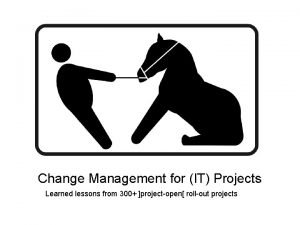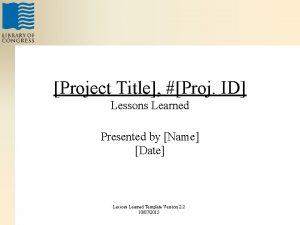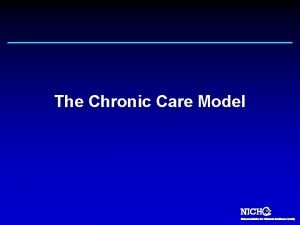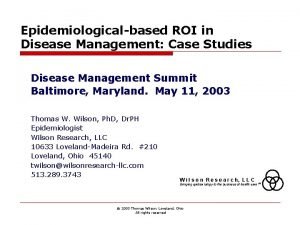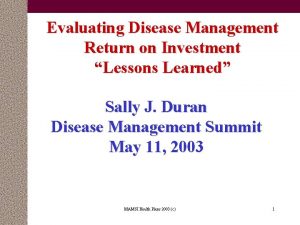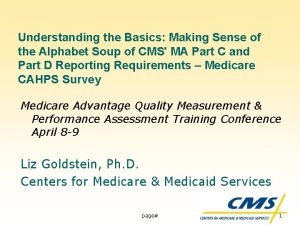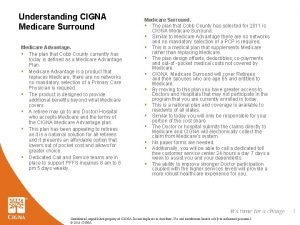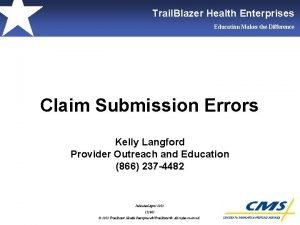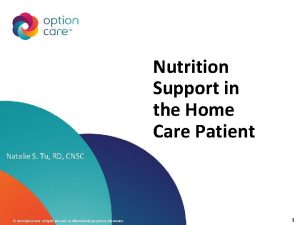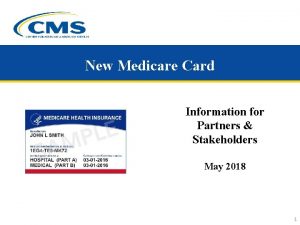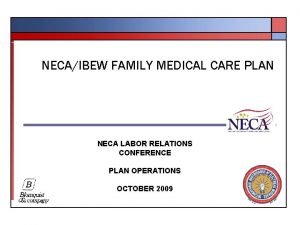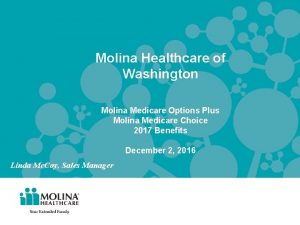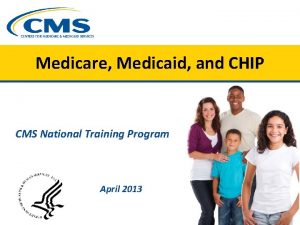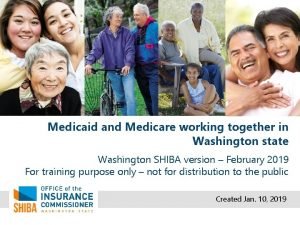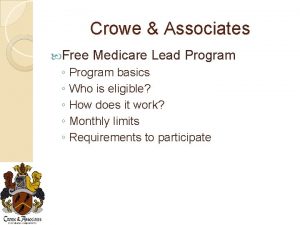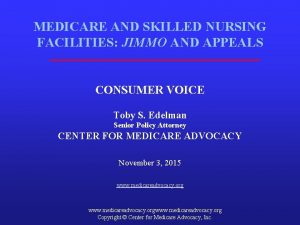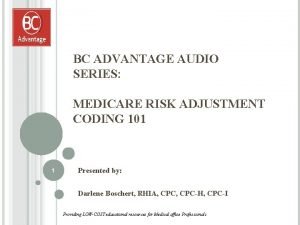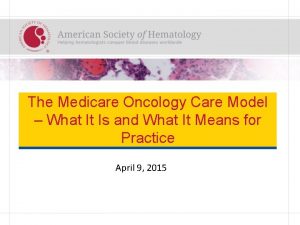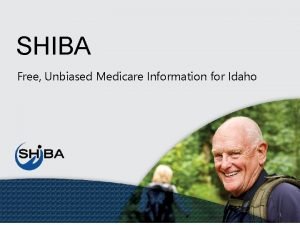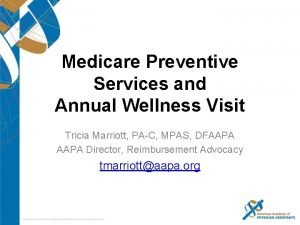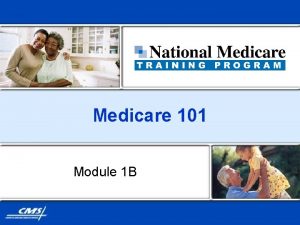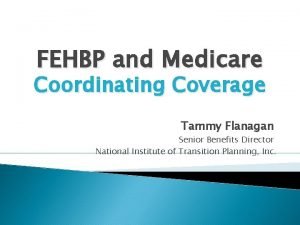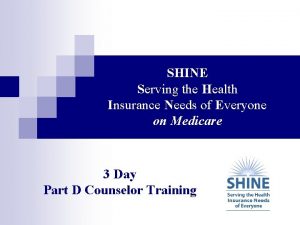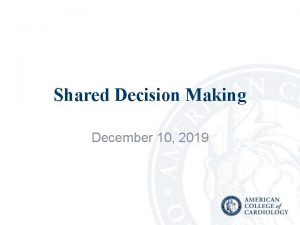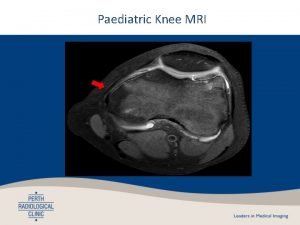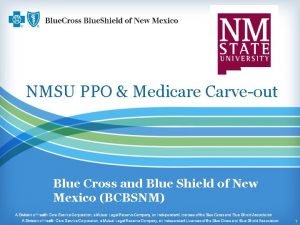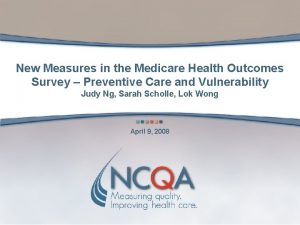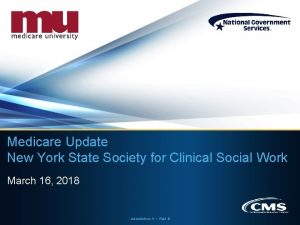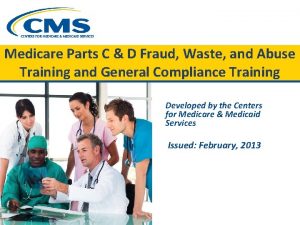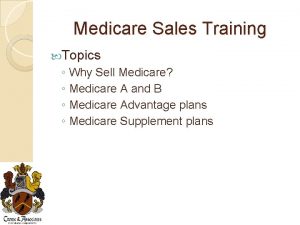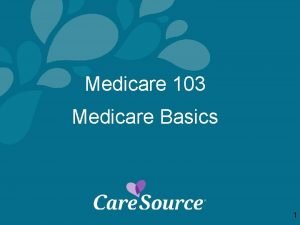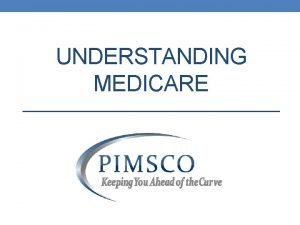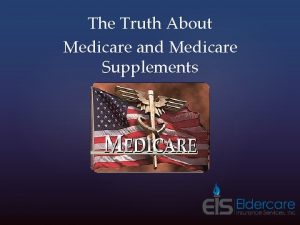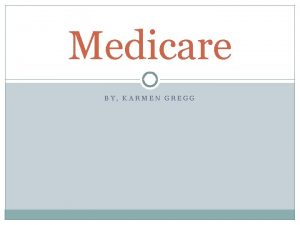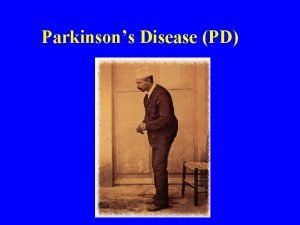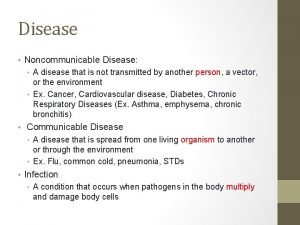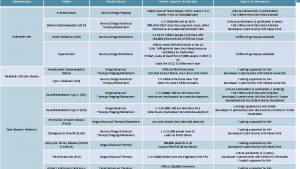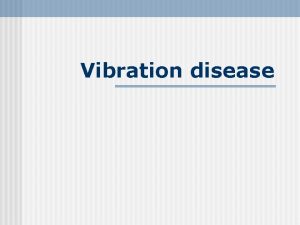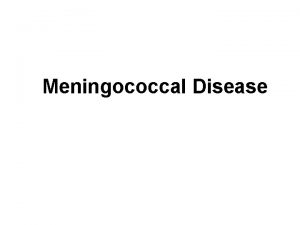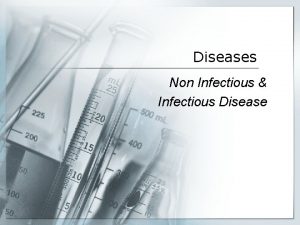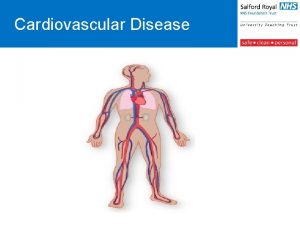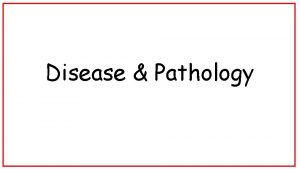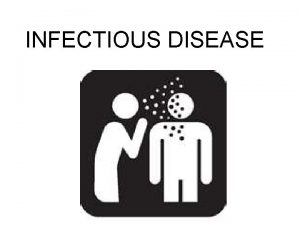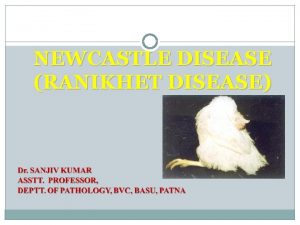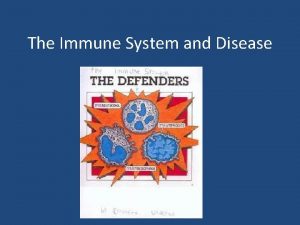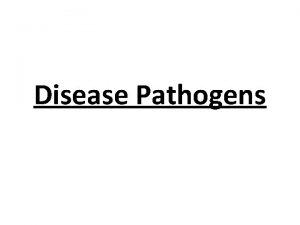Disease Management in Medicare Early Lessons from Medicare












































- Slides: 44

Disease Management in Medicare: Early Lessons from Medicare Health Support and Chronic Care Special Needs Plans Harry Leider MD MBA FACPE Chief Medical Officer XLHealth and Care Improvement Plus Laurie Russell MS RN CCM Senior Director of Health Solutions XLHealth 1

Objectives 1. To provide an overview of the Medicare Health Support (MHS) Program and Special Needs Chronic Care Plans (C-SNPs) 2. To provide our view of the six critical competencies for launching a Chronic Care Special Needs Plan 3. To describe the XLHealth targeted care management approach for senior populations 4. To share some “lessons learned” from our Medicare Health Support Program in Tennessee 2

DM Zealot DM Skeptics 3

Medicare Changes with the Times The Medicare Modernization Act of 2003 (MMA) Two key goals: – Improve the quality of care and life for seniors living with chronic illness – Contain or reduce cost associated with chronic care A key element: – Initiate voluntary chronic care improvement programs (CCIP) with the Medicare FFS system, now called Medicare Health Support (MHS), • Select care management vendors to pilot the program • Not truly a “demonstration” but outcomes will be evaluated 4

Medicare Changes with the Times cont. The Medicare Modernization Act of 2003 (MMA) – Promote coordinated care health plans, the Special Needs Plan (SNP), in the Medicare Advantage (MA) program – Many other aspects, all represent major care delivery model changes 5

Medicare Health Support Phase I: Pilot Program • Vendors – – 8 care management companies selected 3 yr pilot kick off in 2005 Various care management models Multi-disease focus (HF and diabetes) • Design – Voluntary enrollment of FFS Medicare beneficiaries – Participants remain in FFS Medicare – Disease Management services provided • Outcome – A set of quality measures and expectation of 5% net savings 6 – If goals met, CMS may expand the program

Who is the Medicare Beneficiary with Special Needs? Three basic types of SNPs 1. Dually eligible for Medicare and Medicaid (i. e. “dual eligibles”) 2. Institutionalized/Long term care 3. One or more severe or disabling chronic conditions 7

Special Needs Plans (SNPs) • SNPs are growing rapidly • 276 SNPs in 2006 – over 600, 000 beneficiaries enrolled – Only 13 of these were chronic illness SNPs (C-SNPs) with 72, 000 enrollees • 473 SNPs in 2007 – over 840, 000 enrollment as of 3/07 – 84 of these are C-SNPs with 81, 000 enrollees • Increased interest in 2007 due to full risk adjustment in MA premiums 8

XLHealth & Care Improvement Plus • XLHealth now has C-SNPs under our own Care Improvement Plus program in 6 states and one joint venture C-SNP with HIP – Diseases: Diabetes, HF, COPD, ESRD • Starting with our small Maryland pilot in 2006, we have added over 15, 000 seniors in the first 4 months of this year – Average member represents $13, 000 - $18, 000 in annual medical expense prior to joining (ESRD = $80, 000+) • Members received Part D plan, custom formulary, other benefits to improve access to care 9

6 Competencies for a Successful Chronic Care SNP 1. Member acquisition 2. Member engagement 3. Aggressive case and disease management 4. Appropriate utilization management 5. Medication therapy management 6. Assuring appropriate revenues for the high risk population 10

1. Member Acquisition • Our initial approach in 2006 was to use two “channels” – Provider-based marketing and mass media • In 2007 we expanded into two additional channels – Broker sales – Community based marketing 11

2. Member Engagement • In a C-SNP this is less of a problem than in traditional DM programs imbedded in traditional health plans • Members usually join with the expectation of participating in the DM program • You are not relying on inaccurate claims data to identify patients 12

3. Effective Disease & Case Management • It is difficult to achieve financial goals in patients with chronic disease and high spending without effective CM/DM • Denying services (aggressive prior authorization processes), is unlikely to work with the elderly who have serious illnesses – Fewer “elective” hospitalizations and bed-days – High likelihood of disenrollment if UM is too intrusive • Disease Management and CM is what CMS is promoting within the C-SNP model 13

4. Appropriate Utilization Management • In FFS medicine, we know that >15% of services and procedures are not necessary • It is not cost-effective or acceptable to “manage” all services • Strategy: focus on high-cost services with high potential for inappropriate use – Skilled nursing, home care, etc. – Inpatient UM depends on payment model *Kahn KL, Kosecoff. J, Chassin MR, et al. The use and misuse of upper gastrointestinal endoscopy. Ann Intern Med. 1988; 109(8): 664 -70. *Seematter-Bagnould L, Vader JP, Wietlisbach V, et al. Overuse and 14 underuse of diagnostic upper gastrointestinal endoscopy in various clinical settings. Int J Qual Health Care. 1999; 11(4): 301 -8. *Winslow CM, Solomon DH, Chassin MR, et al. The appropriateness of carotid endarterectomy. N Engl J Med. 1988; 318(12): 721 -7

5. Medication Therapy Management • Medication “conflicts” and adherence are major problems for patients with chronic disease – Typical C-SNP patient on 4 or more drugs – These are prescribed by multiple providers – Typical conflicts: • • Drugs not indicated in the elderly Drug-drug interactions Duplicate meds (brand generic) Wrong dosing – Pharmacy-based MTM programs have demonstrated significant cost savings* *Borgsdoef LR, Knapp KK, Niano JJ American Journal of Hospital Pharmacy, Vol 51, Issue 6, 772 -777 *Lee JA, et al Am J Health –Syst Pharm – Vol 59 Nov 1, 2002 15

Medication Non-Adherence Drives Up Healthcare Costs Failure to take medication as prescribed: § § § Causes 10% of total hospital admissions Causes 33% of CHF hospital admissions Causes 75% of Schizophrenia admissions Causes 68% of resistant/mutated HIV virus Results in $100 billion/year in unnecessary hospital costs § Causes 22% of nursing home admissions § Costs the U. S. economy $300 billion/year 16 Archives of Internal Medicine, NCPIE, (N Engl. J Med 8/4/05, National Pharmaceutical Council, American Public Health Association, AIDS 2006 20: 223 -232)

6. Assuring Appropriate Revenue • Premiums from CMS are fully risk-adjusted based on HCCs derived from the ICD 9 codes on provider claim forms from the prior year – Physicians and hospitals routinely do not code for all chronic conditions in a given year – Ex: an amputation not be coded for year – Ex: patients with diabetic neuropathy may only have diabetes coded 17

Undercoding = Underpayment 18

6. Assuring Appropriate Revenue (continued) • Once a member is in your C-SNP (or any MA plan) for one year, you can proactively identify “hidden” chronic diagnoses and CMS will retroactively adjust your premiums – There are strict timelines and rules for doing this – There must be an “audit trail” to the actual diagnosis in a chart – you can’t infer a diagnoses – Tactics = chart audits and provider education 19

20

The Problem What do you do when suddenly faced with thousands of new Medicare enrollees in need of Care Management? 21

XLHealth Our Approach • Robust Multi Disease Management • Complex Case Management • Partnership with INSPIRIS (Long term care) • Limited Utilization Management 22

Key Strategies: Primary Risk Stratification • Identify patients at highest risk for immediate outreach – Use available information – – Predictive Modeling HCC (Hierarchical Condition Categories) data Claims Self reported disease profiles 23

Key Strategies: Establish a strong patient / care manager relationship – Engagement is not easy – Face to face communication important – Local care managers essential – Involve Care Givers – Over 90% of participants said they would recommend the program to friends and family with similar conditions* 24 *DSS Research, Inc. Fort Worth, Texas Nov/Dec 2006

Key Strategies: Telephone Coaching GOALS: Education, Empowerment, Motivation • Supports face to face assessment • Call center approach efficient for high volume activities such as telephonic health coaching • Coaching topics are dynamic and prioritized by care management algorithms • Education Library useful 25

Key Strategies: Depression screening • Higher rates of depression in chronic illness – Average older adult: 5 -10% – Heart Disease: 15 -23% – Diabetes: 11 -15% • Medical Costs are 2 -3 X higher with depression • Care Management is more challenging due to decreased adherence and self-care Katon W: Clinical and health services relationships 26 between major depression, depressive symptoms and general medical illness. Biologic Psychiatry, 2003

27

Key Strategies: Depression Interventions • Share results of PHQ 9 with patient • Recommend patient discuss results with physician if positive for depression or if in treatment and still feeling poorly • Rescreen – Only 30% achieve remission with initial drug – If not improving, the treatment needs to change • Education– Major depression rarely gets better on its own – Medication and psychotherapy are effective – Must continue treatment even if feeling better 28

Key Strategies: Identify the “Quick Hits” • Where do you start? – Medicare patients’ needs are many – Every care manager will have a different opinion about priority interventions • Effective strategy: “Quick Hits” – Can be achieved quickly and have a high impact on reducing serious medical complications that are costly… – Interventions requiring major behavioral change are NOT “Quick Hits” (Smoking cessation, weight loss) 29

Diabetes “Quick Hits” – Appropriate medications: ACE/ARBs, Aspirin, Statins – Blood Pressure screening and treatment of hypertension – Lower extremity screening for neuropathy and vascular deficits – Treatment of current ulcers and wounds 30

Key Strategies: Continually Refine Interventions • Dynamic risk stratification using claims and assessment data • Flexible plan of care responsive to changes in patient condition and disease states • Seamless coordination between Disease Management and Complex Case Management 31

Key Strategies: Never Lose Sight of the Key Indicators • Assure that Care Managers know key indicators and metrics – Clinical – Financial/Utilization – Risk Stratification • Provide aggregate (panel) as well as individual patient data • Integrate reporting into the care management IT system and make it available to front line staff 32

Care Manager Dashboard Patient Panel 625 (New past 7 days + 24) v. Daily triggers (click □ to view patient list) □ Inpatient census 32 □ Urgent activities 32 □ Post D/C calls 24 v. Utilization triggers (click □ to view patient list) □ top 20 patients by total $ □ top 20 patients by # acute care hospitalizations □ # of HF patients ≥ 3 admits/ 12 months Quick Hits % of patients eligible & need evaluation for Quick Hits Click on # to view patient list v. Last patient contact date (click on 32% ACE/ARB need □ > 90 days = 40 □ 60 -90 days = 30 24% Short acting bronchodilator need 35% Statin need 28% Daily weights need 38% LDL need 42% Aspirin need 37% Diuretics need 56% PRN diuretic need 38% Spirometry need 45% Beta blocker need 34% BP out of range 35% BP value need (click □ to view patient list) v. Active Program (click on list) to view patient 78% □ Disease mgt 10% □ CCM 12% □ UM v. Care Mode (click on □ 80% 5% 10% 3% 2% □ □ □ to view patient list) center home telephonic custodial NH mailings only Activities schedule (Click in # to link to list) Overdue # Today 13% Falls Risk 34% Hb. A 1 c value need 12% Depression PHQ 9 ≥ 10 12% Depression PHQ 9 ≥ 20 31% Annual flu vaccine need 15% Pneumonia vaccine need 34% LVEF need 62% DRE need follow up intervention 35% LEX exam need Referral (dropdown) 15% Current LEX wound Welcome call HRA BCE (dropdown of location) v. Interventions (click on □ to view patient list) % patient panel eligible for & need intervention 20% 32% 28% 12% 16% 22% □ □ □ □ telemonitoring scale need digital scale need diabetic shoes need temp device need blood glucose meter need protein supplements need Sureseal band aids Revised 3/28/2007 “Property of XLHealth. Not to be used or reproduced” Due next 30 days # to view patient list) coaching call followup assessment annual assessment Flow assessment (ESRD) 33 3% Vascular access type (catheter> 3 months)

Key Strategies: Partner with Physicians – Physician partnership is essential – “Quick hits” cannot be addressed without physician intervention. WHY – many require prescriptions or orders – Provide patient progress reports – Encourage feedback but limit requests – Consider physician incentive programs 34

Ask Your Doctor Visiting your doctor 2 -4 times a year is important to staying healthy. If you have not seen your doctor in the past 6 months please make an appointment to see your doctor. The following questions are based on answers you gave your XLHealth nurse. Be sure to take this list of questions with you. Talk to your doctor about each of the health questions below. Topic Questions Heart Failure Symptoms Explain your heart failure symptoms to your doctor at every visit. What should I do when I have symptoms such as breathing problems, weight gain or other heart failure symptoms? Should I ever take an extra water pill? If yes, when should I take an extra water pill? ACE inhibitor medication I have heard that ACE inhibitor medication can help people with heart failure or people that have had a heart attack. Would an ACE medication help me? Beta blocker medication I have heard that people with heart failure or people who have had a heart attack should be taking beta-blocker medications. Would a beta-blocker medication be right for me? Statin medications What was my last LDL cholesterol? Do I need statin medications to get my LDL cholesterol below 100? What other suggestions do you have to help me get my LDL cholesterol down? How often should I have my LDL checked? Blood thinners Should I be taking aspirin to help prevent a heart attack or stroke? How much should I take? Extra water pills I check my weight every day for extra water weight. Is it safe for me to take an extra water pill if I gain too much weight or have heart failure symptoms? If yes, would you write instructions for when I should take an extra dose? Low sodium diet 35 I have not been following a low sodium diet carefully


Key Strategies: Partner with Pharmacists • Pharmacists bring added value • Respected by physicians and patients • Expert at medication therapy management • Offer “visits” with a local pharmacist in person or via phone • Direct communication with physicians regarding drug 37 interactions and gaps in care

Key Strategies: Manage Transitions Between Settings Hospital admissions and transfers can be hazardous to the patients health! – High risk for miscommunication between providers – Lack of electronic medical records and coordinated systems of care cause errors Opportunity for improvement – “Post discharge call” – Reduce readmissions 38

Key Strategies: Complex Case Management Component • Traditional DM interventions less relevant to patients with severe or life threatening illnesses • Provide additional support for the most complex, needy patients and care givers • Social work component important • Limited patient load (< 100 per case manager) 39

Key Strategies: INSPIRIS Partnership • Nursing home residents need a different strategy • Dedicated Nurse Practitioner model • Clinical Approach – Proactively avoid acute episodes (falls, ulcers) – Medication Management – End of life/advance directives • Guidelines – Utilize American Medical Directors Association (AMDA) chronic care and acute problem guidelines 40

Medicare Health Support: Early Lessons Learned • Caveat: Public results will be reported in the reports to Congress. The first report is August 2007. • Engagement is hard work, we spent the first 6 months of the program “enrolling” beneficiaries – The population-based model made engagement a necessary but not sufficient condition for success • Special populations require new approaches – Many of the beneficiaries had very serious co-morbid problems due to HCC cutoff (>1. 35) – Beneficiaries in LTC facilities – Significant rates of dementia were encountered – People living in rural areas with poor access to providers and 41 our screening centers

Medicare Health Support: Early Lessons Learned (cont. ) • Enrollee satisfaction is very high – Over 90% of enrollees would recommend the program to a friend or family member • We are only 16 months into the 3 year program, but we are satisfied with the impact of the program so far. 42

Summary • There now are multiple models for delivering DM programs to Medicare beneficiaries in addition to tradition MA plans • MHS Phase I • Chronic Care Special Needs Plans • Other CMS Demonstrations • There are 6 key competencies for successful C-SNPs – Engagement is a key driver in both models but critical in MHS • Chronic Care Special Needs Plans provide a dynamic model for improving quality and reducing costs for our Medicare system 43

Summary cont. • Care Management (DM/CM) in the Medicare population is challenging and requires multiple strategies – – Focusing on “Quick Hits” is helpful Personal relationship with the care manager is key Keeping key indicators accessible to front line staff is essential Nursing home residents require a different approach • CMS is testing a variety of approaches through MHS and other chronic condition demonstrations. 44
 Communicable disease and non communicable disease
Communicable disease and non communicable disease Early cpr and early defibrillation can: *
Early cpr and early defibrillation can: * Leadership lessons from chak de india
Leadership lessons from chak de india Change management lessons learned
Change management lessons learned Dps project title
Dps project title Hirschsprung disease nursing management
Hirschsprung disease nursing management Phototherapy for newborn's nursing interventions
Phototherapy for newborn's nursing interventions Kate lorig stanford
Kate lorig stanford Disease management association of america
Disease management association of america Ed wagner chronic care model
Ed wagner chronic care model Stage 3 liver cirrhosis
Stage 3 liver cirrhosis Disease management roi
Disease management roi Deka vitaminok
Deka vitaminok Mdipa/oci
Mdipa/oci Early examples of management
Early examples of management Early warning system in disaster management
Early warning system in disaster management Medicare phonetic alphabet
Medicare phonetic alphabet Is cigna a medicare plan
Is cigna a medicare plan Trailblazer medicare
Trailblazer medicare Medicare enteral qualification checklist
Medicare enteral qualification checklist New medicare card poster
New medicare card poster Neca/ibew family medicare plan
Neca/ibew family medicare plan Molina healthcare eligibility washington
Molina healthcare eligibility washington Medicare training program
Medicare training program Shiba rainbow chart
Shiba rainbow chart Crowe and associates
Crowe and associates New medicare card poster
New medicare card poster Novitasphere access
Novitasphere access How to win a medicare appeal for skilled nursing
How to win a medicare appeal for skilled nursing Medicare advantage risk adjustment 101
Medicare advantage risk adjustment 101 Oncology care model quality measures
Oncology care model quality measures Shiba medicare idaho
Shiba medicare idaho Medicare preventive services quick reference
Medicare preventive services quick reference Freenpeople
Freenpeople Tammy flanagan
Tammy flanagan Medicare advantag
Medicare advantag Medicare part d covers
Medicare part d covers Medicare assistant
Medicare assistant Acno plasma shower
Acno plasma shower Mri indications gp
Mri indications gp Medicare carve out
Medicare carve out Medicare health outcomes survey
Medicare health outcomes survey Medicare jurisdiction k
Medicare jurisdiction k Downstream entity examples
Downstream entity examples Downstream entity examples
Downstream entity examples



